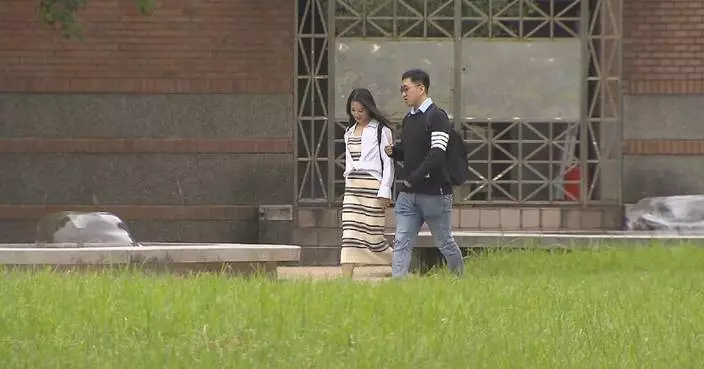Chinese tech giant Xiaomi has achieved a high degree of automation in its new energy vehicles (NEVs) super-factory in Beijing, deploying over 700 robots to enhance production efficiency and precision.
The company entered the NEV sector in 2021 and released its first self-developed new energy vehicle model in March this year, attracting widespread attention.
Covering a land area of more than 700,000 square meters, Xiaomi's NEV super-factory has deployed more than 700 robots in six workshops to achieve full automation of the key automobile production process, making it one of the most advanced NEV factories in the world.
At the die casting workshop, an advanced large machine can die cast the rear floor of the NEV at one go. The making of the rear floor used to require the welding of 72 parts, and the deployment of the machine means 840 fewer welding points and almost a tenfold increase in production efficiency.
Another highlight is the stamping workshop, where the outer parts of the car including doors and panels are produced. At the super-factory, it only takes an average of four seconds to produce a set of outer parts.
Data from the China Association of Automobile Manufacturers shows that in 2023, China's NEV production and sales increased by 35.8 percent and 37.9 percent year on year respectively. The sales accounted for nearly 65 percent of total global NEV sales. China has been the world's top producer and seller of NEVs for nine years in a row.

China's NEV super-factory employs 700 robots to improve efficiency
Chinese scientists have recently worked together and rebuilt the face of an ancient Chinese ethnic minority emperor via cutting-edge DNA technology.
Emperor Wu of the Xianbei-led Northern Zhou Dynasty (557-581), also known as Yuwen Yong, was an ambitious leader who died at 36. He belonged to the Xianbei nomadic group, which originated from the Mongolian Plateau.
The tomb of the emperor was discovered in 1993 in a village of the city of Xianyang in northwest China's Shaanxi Province. His skull and bones were discovered during an excavation held in 1994 and 1995 at the site of his tomb.
In late March this year, scientists led by the Shaanxi Provincial Institute of Archaeology and the Institute of Archaeological Science of Fudan University managed to decode key features of the emperor and speculate about his cause of death. The emperor might have died from chronic arsenic poisoning due to long-term use of a pellet, which was believed by ancient people to achieve eternal life.
"First, the skeleton can be used to determine age. Second, in terms of age and gender, some pathological research can also be done to see if he had any fractures or other (diseases)," said Zhang Jianlin, a researcher from the Shaanxi Provincial Institute of Archaeology.
Obtaining high-quality genomic data is crucial for restoring the face. Through DNA paleogenomics techniques and optimized DNA extraction, database building and capture methods, more history was revealed.
"First, we have done the shorter fragments enrichment method, which is a DNA extraction method. In addition, we have developed some more sensitive database building method suitable for ancient samples with short fragments. You can regard it as a method to amplify the genetic signal, the extracted DNA. The third is that we have developed a capture method that is more suitable for this kind of highly degraded ancient samples. So we have optimized and improved our approach from three aspects at the same time," said Wen Shaoqing, an associate professor of the Institute of Archaeological Science of Fudan University.
The reconstructed face showed that Yuwen Yong had black hair, yellow skin and brown eyes, while his appearance was typical for people from East or Northeast Asia.
Wen said that with the help of the DNA technology, the accuracy of facial restoration can reach 90 percent.
"As for the accuracy of (facial restoration), the current situation is that if there is a skull as a basis, its accuracy will be relatively high," said Wen.

Scientists rebuild face of ancient emperor using advanced DNA technology










